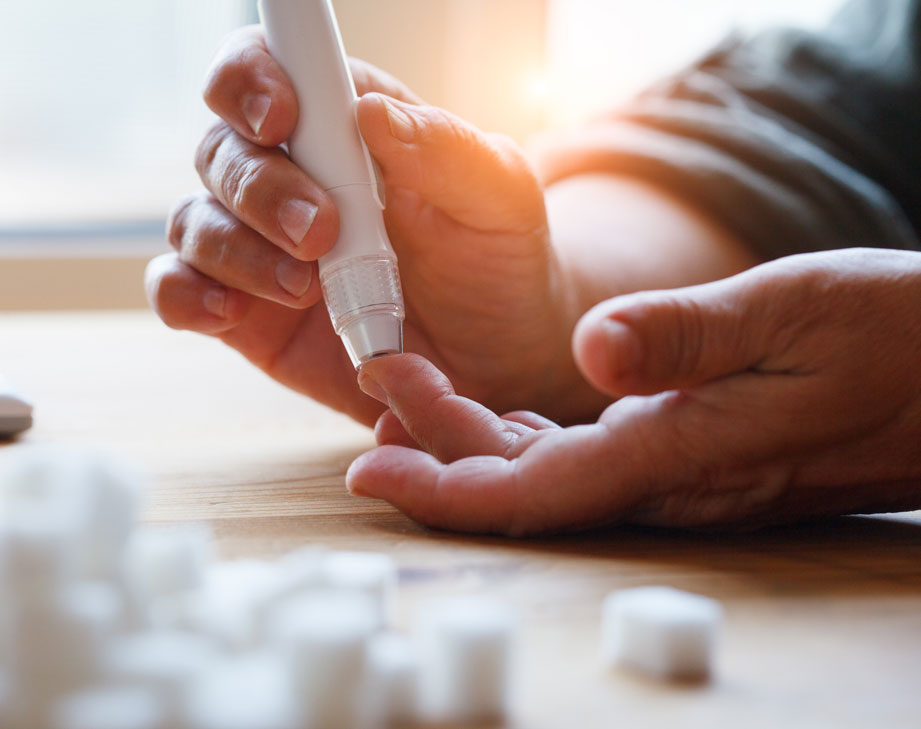

Diabetes | Insight
Introduction
Diabetes is a lifelong health condition which affects around 4.5 million people in the UK. It causes blood sugar levels to rise - and can be life-threatening if not managed effectively.
There are two forms of the condition - type 1 and type 2 – with the latter accounting for a large majority of cases overall.
Effective treatment and condition-management is available for both types of the illness, with an emphasis on lifestyle adjustments for type 2 diabetes.
The condition can fall within the scope of the Equality Act 2010 and workplace adjustments may be necessary to accommodate employees with the condition.
Key takeaways
- Diabetes is caused by the body’s inability to generate the hormone insulin, leading to a surge in blood sugar
- Type 1 diabetes accounts for around 10 per cent of cases
- Type 2 diabetes accounts for the large majority of cases, and is associated with family history and lifestyle issues
- Diabetes is the biggest single cause of sight loss, amputations and kidney failure requiring dialysis in the UK
- Managing diet plays an important role in the treatment of type 2 diabetes
- Treatment can include medication and / or administration of insulin tailored to the patient
- Diabetics are able to monitor their blood sugar level, in order to anticipate attacks
- Fitness to drive can be impacted by diabetes
- Diabetes can fall within the scope of the Equality Act 2010, meaning employers must make reasonable adjustments for staff with the condition
Symptoms and diagnosis
Our bodies depend on the blood sugar, glucose, to supply energy - and if cells in our brains are deprived of glucose for less than five minutes, they start to die. If this persists for more than 10 minutes, we will be dead.
Glucose needs the hormone insulin (produced in the pancreas) to enter the cells, and if production of insulin falls, blood sugar levels surge – giving rise to diabetes.
Type 1 diabetes (also known as juvenile onset diabetes) is responsible for around 10 per cent of cases - and mainly affects children and young people. It is caused by a deficiency of insulin, perhaps because the beta cells which produce it have been destroyed by a viral infection or auto-immune process.
Sufferers can swiftly become very ill, passing large volumes of sugar-containing urine. The body resorts to breaking down fat and muscle tissue as it attempts to produce energy, causing weight loss and weakness.
Unless the insulin is replaced, death quickly follows. This is a life threatening situation and the insulin must be replaced urgently.
Type 2 diabetes is responsible for more than 85% of cases - and has been increasing in prevalence in recent decades. While it can run in families, it is strongly associated with lifestyle issues - such as obesity and sedentary work / leisure.
Although high levels of blood sugar and reduced insulin are essential features, the phenomenon of “insulin resistance” (a barrier to the uptake of insulin) also seems to play an important part.
The symptoms are more innocuous than for type 1 diabetes - and can be overlooked until the patient presents to their GP complaining of deteriorating vision or to the A&E Department with severe chest pain.
Earlier symptoms include urinating more than usual (particularly at night), persistent thirst, feeling tired, weight loss, itching around the genital regions (or getting thrush), cuts taking longer to heal and blurred vision.
Treatment and prognosis
People with diabetes must control their condition by keeping blood glucose levels within normal limits. Treatment for type 1 diabetes (and some cases of type 2) is by the administration of one or more types of insulin, with the dose tailored to the individual’s requirements.
A problem faced by those using insulin is that the blood sugar can drop precipitously, giving rise to hypoglycaemia (commonly referred to as a ‘hypo’).
Those with type 1 diabetes are taught to recognise an incipient ‘hypo’, so that they can consume a sugary snack or use a glucagon injection to restore more-normal sugar levels.
There are a number of systems which constantly deliver insulin to the body - matching natural secretion of the hormone - as well as kits which enable diabetics of either type to monitor their blood sugar levels.
Most diabetics self-manage their condition, with assistance from their GPs. Hospital-based clinics tend to be attended by those whose diabetes is harder to manage.
Good control of both types of diabetes is vital in the longer term, as poorly managed diabetes wreaks havoc with blood vessels and nerves - increasing the likelihood of strokes, heart attacks and lower limb amputations.
In addition to insulin, there are drugs which mimic the effect of some of the gut hormones which also regulate blood sugar.
Most are taken by mouth, but some require injection.
Careful attention to diet is an important aspect of the self-care of both types of diabetes, but is particularly relevant to type 2 diabetes – as weight loss plays an important part in its control.
If someone with type 2 diabetes returns to their correct weight for height, they stand around a 25% chance of the disease going into complete remission, provided the weight is not subsequently regained.
Diabetes at work
The possibility of hypoglycaemia has obvious implications for those in safety critical roles or working alone.
There are significant implications for lost productivity due to sickness absence, premature death, retirement or just decreased performance due to diabetes.
The illness is often likely to fall within the Disability Provisions of the Equality Act 2010, with employers required to make reasonable adjustments.
Fitness to drive may be impacted by diabetes and the first recourse should be to DVLA guidance, available online. This indicates what should be done in a variety of cases, depending on the class of vehicle, type of diabetes, its control and the presence or absence of complications.
Wellbeing campaigns and support with a focus on weight control, healthy diets, exercise and tobacco smoking can play a role in the prevention of type 2 diabetes.
If employee consent is gained, first aiders could be made aware and prepared for the possibility of a “hypo”.
Occupational health will be able to provide advice, particularly with regards to more complex issues.
For more general issues, Diabetes UK can be a useful source of advice, and if a significant expenditure is required to make reasonable adjustments, funding may be available from the government’s Access to Work fund.



